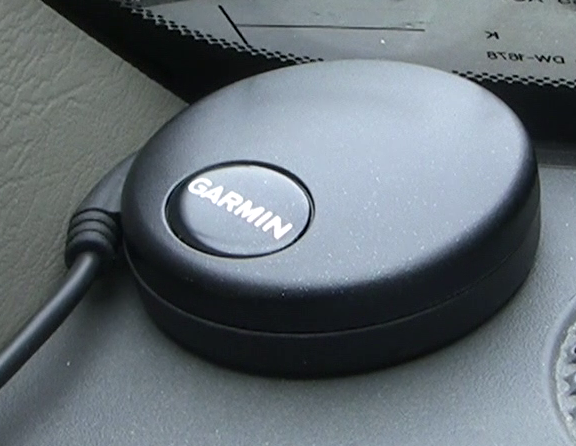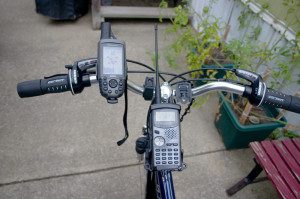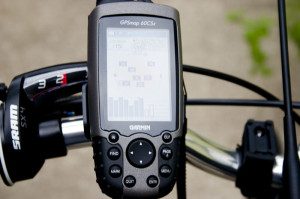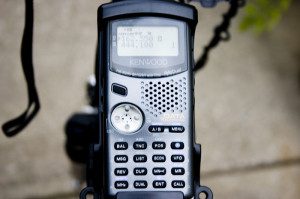I use the Gaia GPS app on my iPhone for finding and recording various hiking trails around me. I discovered you could import GPX, KML and other files into Gaia GPS. I thought it would be cool if I could add some ham radio items right into Gaia GPS. After some research, I was able to import GPX files from Repeater Book, POTA and SOTA websites.
Repeater Book
- Go to the RepeaterBook.com website
- Log in if you haven’t already and click on North American Repeaters.
- Click on the state you are interested in. I chose Illinois since that is where I am.
- Choose whichever criteria you want. I chose All for simplicity.
- You should see a list of repeaters. Click on Export at the top and choose GPX.
- Click OK on the warning screen.
- It will ask you to choose what two labels you want. I picked the Callsign for #1 and Location (City) for #2.
- Check the box that says “I agree to use this data for personal use only.” and then click Download.
- In your downloads folder, you should now have a GPX file called repeaterbook_repeaters_datetime.
Parks on the Air (POTA)
- Go to the POTA website and make sure you are logged in.
- Click on the menu in the top left and choose Park List.
- Scroll down to the United States and click the triangle on the left side to expand the list.
- You should see a second listing for United States that shows all the individual states.
- Click on the state you want.
- With the list of parks listed, click on the Download link and choose GPX.
- In your downloads folder, you should now have a GPX file called State(US-State). Mine says Illinois (US-IL).GPX
Summits on the Air (SOTA)
- Go to the SOTA Maps website and make sure you are logged in.
- Under Association at the top, choose the area you want to import. I chose W9 – USA since that is where I am located.
- Under Region at the top, pick the one you are interested in. If you want all of the regions in that group, check the Multi box above the dropdown box. I picked W9/IL, W9/IN, W9/WI.
- At the bottom of the list of summits, click the export button.
- As before, choose the association and regions you want.
- In the output format dropdown, choose GPX file and then click Create File.
- In your downloads folder, you should now have a ZIP file called SMP_Date_Time.zip. You’ll need to extract the GPX file from the ZIP file before importing it to Gaia GPS.
Importing to Gaia GPS
Now that we have GPX files from each site, we can import them to Gaia GPS.
- Go to the Gaia GPS website and make sure you are logged in.
- On the menu on the left side of the screen, click on Import Data.
- Click on select files and select the GPX file we downloaded from Repeater Book.
- Check the Waypoints box and click on Import.
- You should now see a list of repeaters that were in the GPX file. Click the Save Items button at the bottom. This will take a few moments depending on how many repeaters you exported.
- When it’s done, you should see a list of your repeaters on the map.
- Repeat these steps to import the GPX files from POTA and SOTA
Changing the icons
I like to change the icons to make them represent each group whether it’s a tower for a repeater or a tree for a park.
- Click the Saved Items on the left menu.
- Click on one of the imported files.
- Click on Items.
- Click the circle to the right of the first item. Then click the circle above it to select all the items.
- Click the 3 dots next to the circle and select Set Icon.
- For the repeaters, I used the tower icon. Type in tower and click the icon and click Save.
- Depending on how many repeaters or other items you imported, it could take a while to change all the icons. When I did it, I had to repeat this process numerous times until all the icons changed to the new icons.
Now if you go to your phone and login to the Gaia GPS app, you should see the the imported items on your map. Pretty cool isn’t it? You can shut layers off and on as needed so they don’t clutter your phone or slow it down.
Let me know if you have any questions about this process or if you have other suggestions on what to import into Gaia GPS.
You can download Gaia GPS for iPhone or Android below.
iPhone: https://apps.apple.com/us/app/gaia-gps/id1201979492
Android: https://play.google.com/store/apps/details?id=com.trailbehind.android.gaiagps.pro&hl=en
I also made a video on how to import data from Repeater Book, POTA and SOTA into Gaia GPS.



